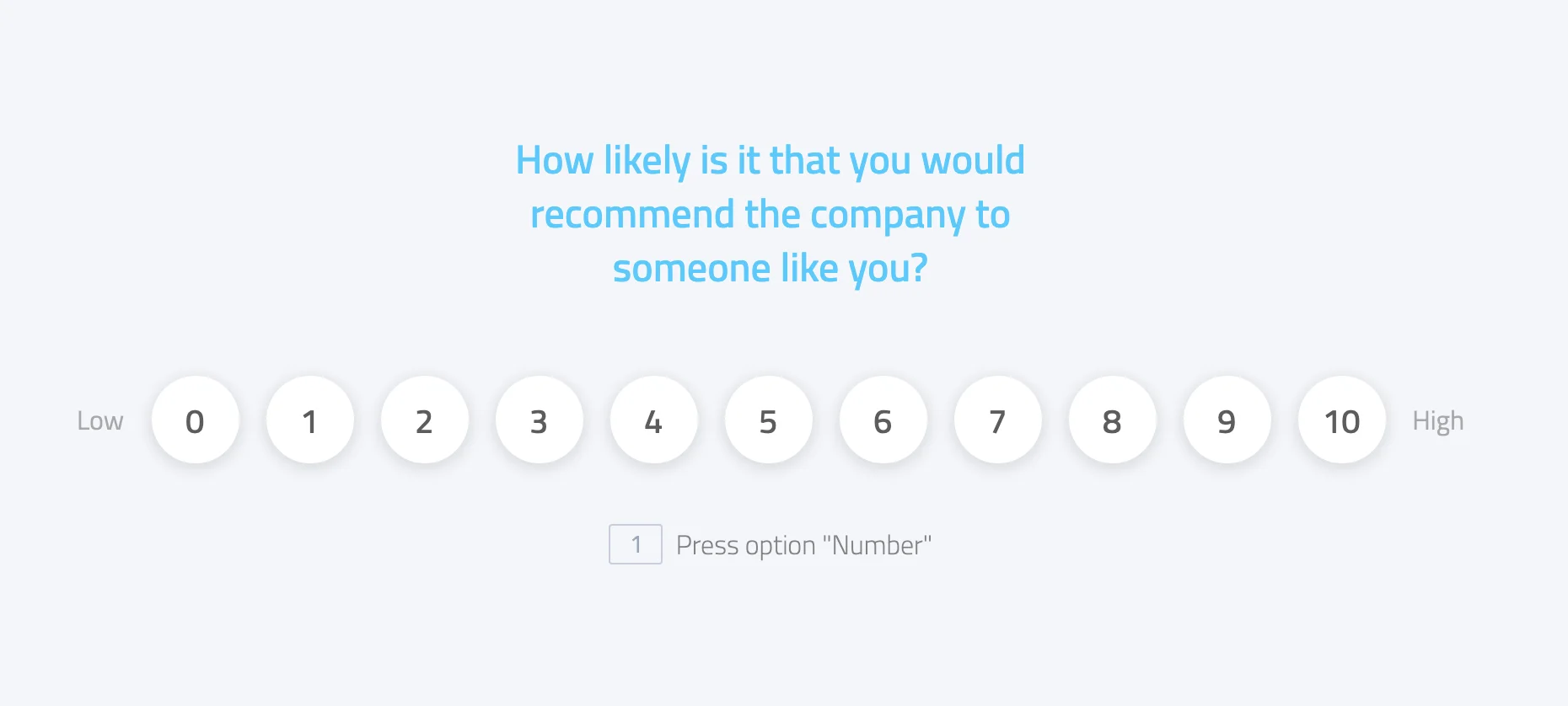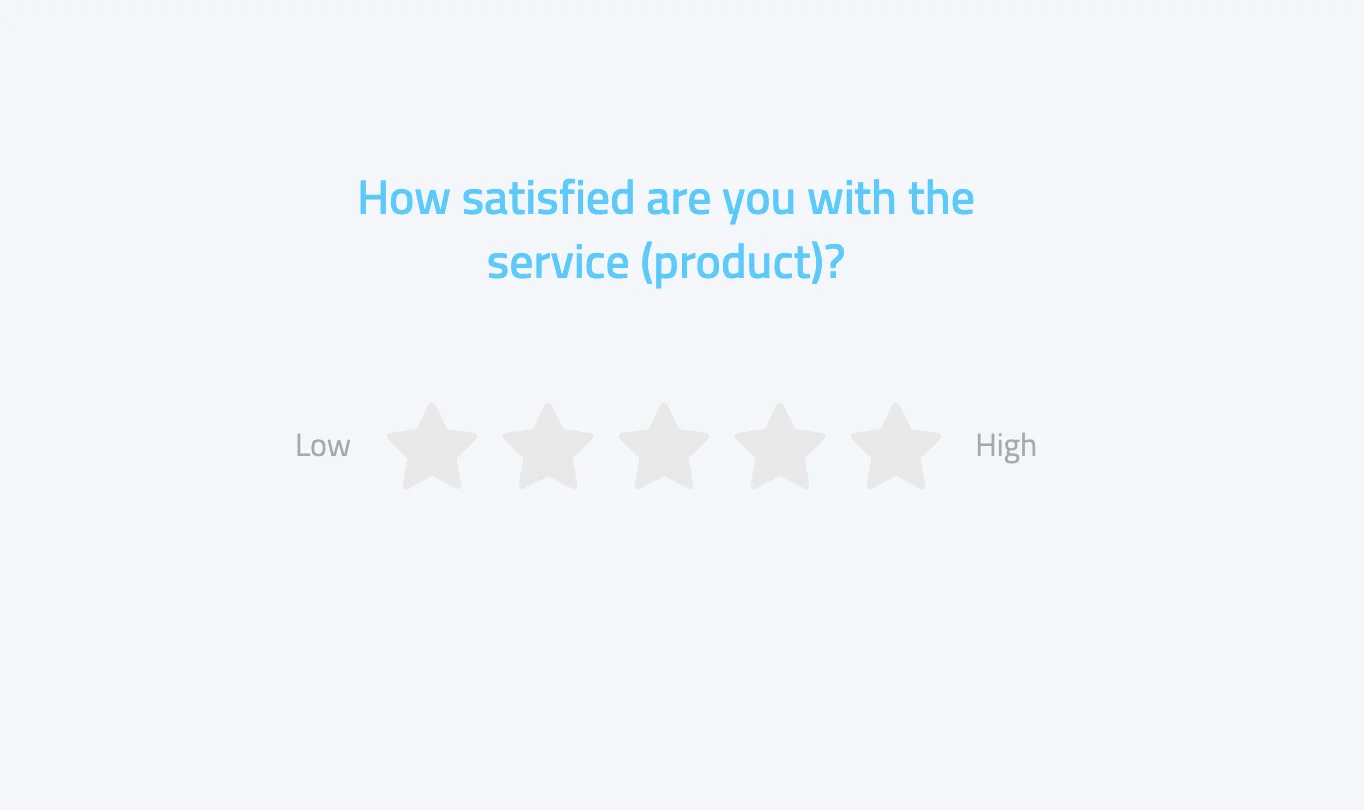6 Steps to Increase Your Customer Satisfaction
Aug 19, 2023
~10 min read

When your business is just at its start, every customer’s opinion matters. The high churn rate of customers can affect not only the revenue but also your own personal motivation. In this article, we will explain the benefits of customer satisfaction and tell you how to increase it.
What is customer satisfaction?
So, what does it mean when the customer is satisfied? Generally speaking, the customer is satisfied when their expectations are met. Yes, it sounds that simple. Unfortunately, expectations will vary from one client to another.
It is impossible to please everyone or to bring out a single list of what needs to be improved and added so that all customers’ loyalty increases forever. That’s why customer analysis is an essential thing to do regularly and thoroughly. Customer insights gathered by regular surveys are the key to your business growth.
Why customer satisfaction is important for your business?
It increases your revenue
As obvious as it is. Loyal customers are more likely to visit your store again. They are also more likely to upgrade existing subscriptions, buy exclusive content, and not leave for a competitor at the first opportunity. “5% increase in customer retention produces more than a 25% increase in profit”, according to the statistics.
Satisfied customers bring their friends
You do it yourself, don’t you? If you are satisfied with a hairdresser’s services there is a high chance you’d recommend their services to your friend who is thinking about a new haircut. It is proven that 85% of customers are usually being brought by word of mouth.
Churn rate becomes lower
According to statistics, reducing the customer churn rate by 5% increases revenue by 25-95%. Sounds good, right? But what if the rate increases? Customer churn statistics can become not only an unpleasant figure in your monthly report but also a serious red flag for investors. The loss of an investor can be fatal in the early stages of startup development. Do keep a close eye on the churn rate, which directly depends on the satisfaction of your customers.
It improves your business and personal motivation
No matter how impressive the numbers are, the key factor for motivation is positive feedback from your customers.
The realization that you have made someone's life better and easier by offering your solution. That you decorated someone's house with your product. Or that you have invested in someone's self-education. A feeling of gratitude from real people and words that will support you every day on the way to the office or in the morning before you open your laptop.
What types of metrics measure customer satisfaction?
So, how does one measure customer satisfaction? For a detailed analysis customer satisfaction metrics come in handy. There are three basic ones to get the necessary data for your business to grow.
NPS

NPS stands for Net Promoter Score and indicates the customer’s loyalty level. NPS is the main indicator of business growth and customer retention. It is usually measured within a simple customer feedback survey. The latter includes a single question: “On a scale from 0 to 10, how likely is it that you would recommend the company to someone like you?”.
Those who rated 9-10 points are your potential promoters. Those with 7-8 points are passives. Dissatisfied customers giving 0-6 points are the detractors.
You calculated the NPS percentage by the formula:
NPS = %”promoters” - %”detractors”
A score of 30% is considered a satisfactory result, 50% or more is excellent.
CES

CES stands for Customer Effort Score. It is a customer service metric that measures user experience with a service. “How easy was it for you to cope with the task?” - that’s the question for CES measurement.
Clients rate their experience on a 5-point Likert template scale from “Very difficult” to “Very easy”. CES can be used as an independent evaluation method, or it can be combined with other ways to get feedback.
For example, you can offer customers to rate CES and ask them to write a detailed review of the service afterwards.
CSAT

CSAT stands for Customer Satisfaction Score. Although it sounds universal, with this metric you can directly evaluate only specific interactions of the client. A conversation with tech support, visiting a website, using an app, or overall satisfaction with the purchased product.
To calculate CSAT, ask your customers a question: “How satisfied are you with the service (product)?”. As is with CES, the Likert scale (of any format) fits here just perfectly. Yet, it is not the only useful format.
How to improve customer satisfaction?
Now, when you know all the benefits of customer satisfaction and customer satisfaction metrics, let’s proceed to the actual guide.
Step 1. Define the exact metric you want to measure
Which indicator is the most relevant for your business right now? Have you just launched your business and have concerns about the quality of the products? Or are your friends complaining about the app’s interface being too confusing and you want to check the actual feedback from real customers?
For each purpose, you’d have to measure one of the metrics: NPS, CES, or CSAT. Pick one and proceed to the next step.
Step 2. Explore solutions
For each metric, except NPS one, there are several rating scales available. Here NPS is the easiest one to measure because of the universal scale format. The remaining two metrics will leave you choosing. There are many interesting solutions you can use to measure CES and CSAT.
CES measurement can be authentically integrated as the post-purchase thank you page survey. After the customer has paid for the order, they may find themselves on the page expressing gratitude for this action and then you catch him with a question or two.
“Thanks for the order! Was it easy to make it?” - if you prefer strict “Yes/No” answers, swipe cards may be a great solution.
“Thank you for your purchase! Please, rate how difficult it was for you to find everything you wanted” - here the 3 or 5-point Likert scale may be of use.
To measure CSAT you can use similar solutions. If you want the customer to elaborate on their experience or to get a broader view of the customer experience, the “Multiple answers” scale will be just perfect.
How to choose a proper rating scale for your business
Step 3. Create a survey
This step is usually the easiest. Plenty of great customer experience software is out there for you. We did research and compared the most interesting of them by several parameters: pricing, number of available questions and answers, and the purpose of which one or another solution suits best.
Nevertheless, let us give you one practical piece of advice as well: do not forget to ask the questions clearly and straightforwardly.
Learn the best online survey instruments
Step 4. Measure scores regularly
There is no point in measuring metrics once or at any convenient moment. The most common practice among business giants is once-a-quarter measurement. If you regularly conduct surveys, received feedback will have a practical value.
Regular customer feedback surveys allow you to develop a strategy to improve the services or to set a measurable KPI goal.
Step 5. React in time
Do not underestimate your customers. Leaving them ignored may cost you a lot. If, according to surveys, they are not satisfied with some aspect of your service or product, fix it now. Do not think that customers can be that patient. If fixing takes time, announce upcoming changes. This way customers will understand that they have been heard and will be more likely to stay with you in the future.
Step 6. Improve your business accordingly to the feedback
Actually, everything said above comes to this simple thought. To improve customer satisfaction, just listen to the customers’ feedback. Otherwise, why even gather it?
Summary
All in all, let's agree: customer satisfaction matters. It brings many benefits to your business both in terms of income and personal motivation. Customer satisfaction is measured by three main metrics: NPS, CES, and CSAT. For each, it is necessary to formulate a question separately and create a rating scale according to your defined purpose.
There is a large selection of scales that will allow you to measure them and, as a result, improve your business.
